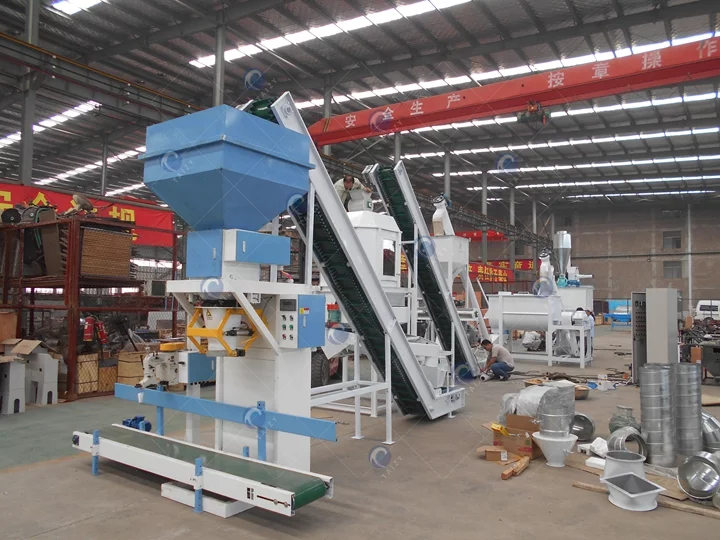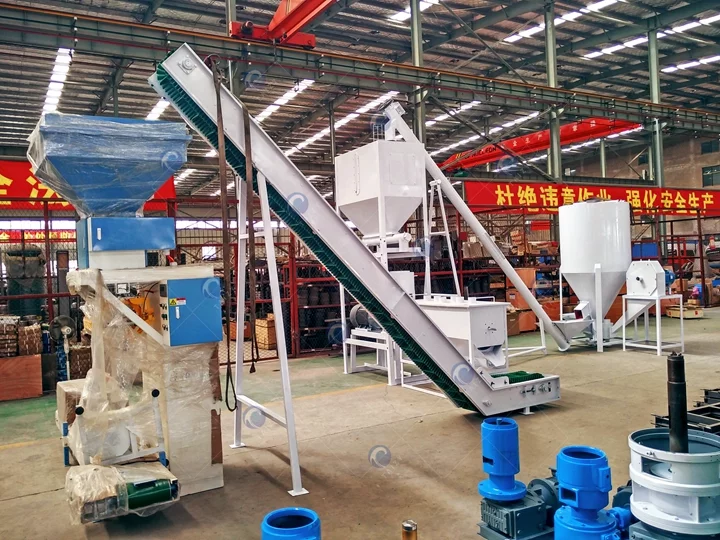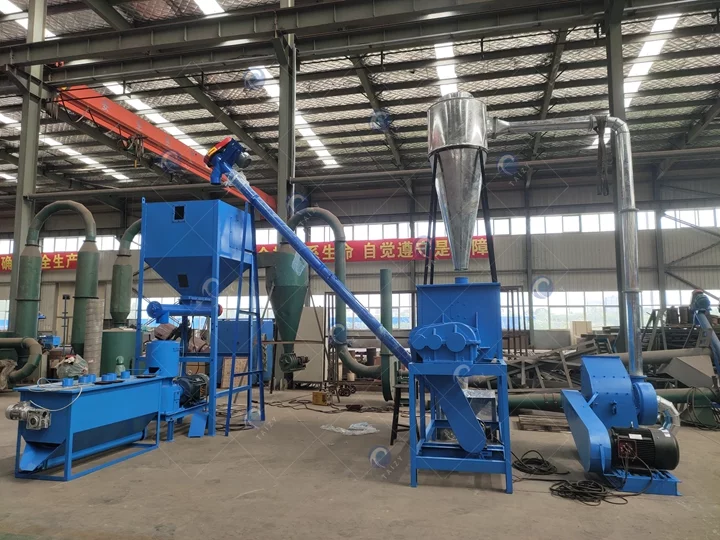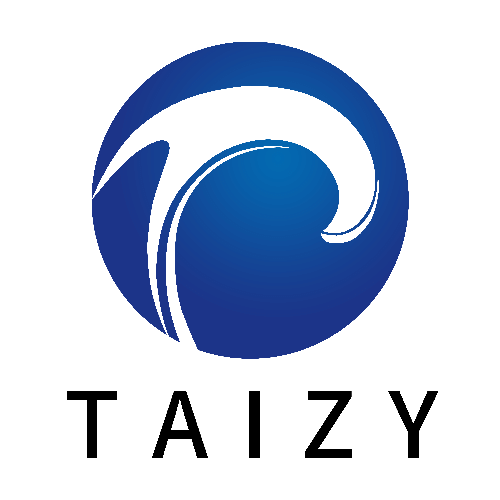Working process of fish feed pellet production line
In modern aquaculture, efficient feed production is a key factor in enhancing overall productivity.
The working process of a fish feed pellet production line, through a series of precise and coordinated steps, provides a balanced and comprehensive feed for aquaculture.
This article delves into the intricacies of this process, revealing its crucial significance for the aquaculture industry.

1. Raw Material Preparation
The first step in the fish feed pellet production line is meticulous preparation of raw materials. Common ingredients include fish meal, soybean meal, corn, wheat, and more.
The selection and ratio of these raw materials determine the nutritional composition and palatability of the final feed.
2. Grinding
Raw materials enter the grinding phase, where equipment like hammer mills is employed to refine them into powder.
The objective is to increase the surface area of the materials, facilitating smoother subsequent mixing and pelletization.
3. Mixing
The ground raw materials are conveyed to a mixing machine, ensuring a thorough and even blend of various components.
The quality of this mixing process directly impacts the comprehensiveness of the final feed pellets, making this step critically important.

4. Pelletizing
The mixed materials undergo pelletization using a fish feed pellet machine. Rollers and molds within the machine work in tandem to compress the raw materials into small cylindrical pellets.
This step not only aids in pellet formation but also enhances the stability of the pellets through the extrusion process.
5. Cutting
The pellets produced by the pellet machine are typically elongated, and a cutting blade is employed to adjust them to the desired length.
This flexibility in length adjustment allows customization based on diverse aquaculture needs.
6. Drying
To improve the shelf life of the feed pellets, they enter a drying unit to reduce moisture levels to the required standard.
This step helps prevent mold or dampness during storage and transportation.
7. Cooling
Post-drying, the pellets pass through a cooling device, rapidly reducing their temperature to room level.
This prevents condensation of moisture during storage and transportation.

Conclusion
By delving into the intricate working process of a fish feed pellet production line, we gain a better understanding of its role in optimizing the efficiency of aquaculture.
This highly efficient and precise engineering process provides the aquaculture industry with sustainable, high-quality feeds, propelling the sector forward.
